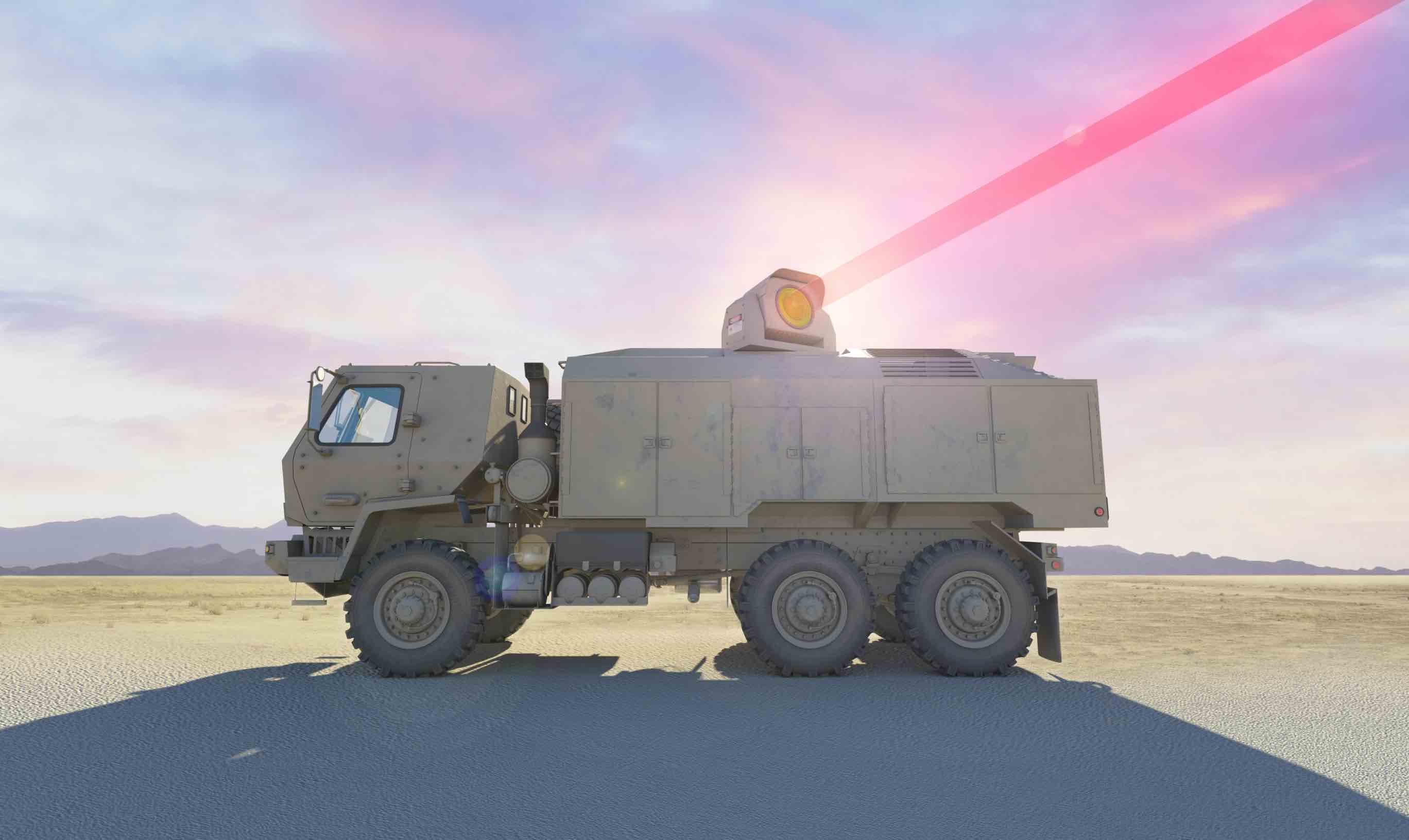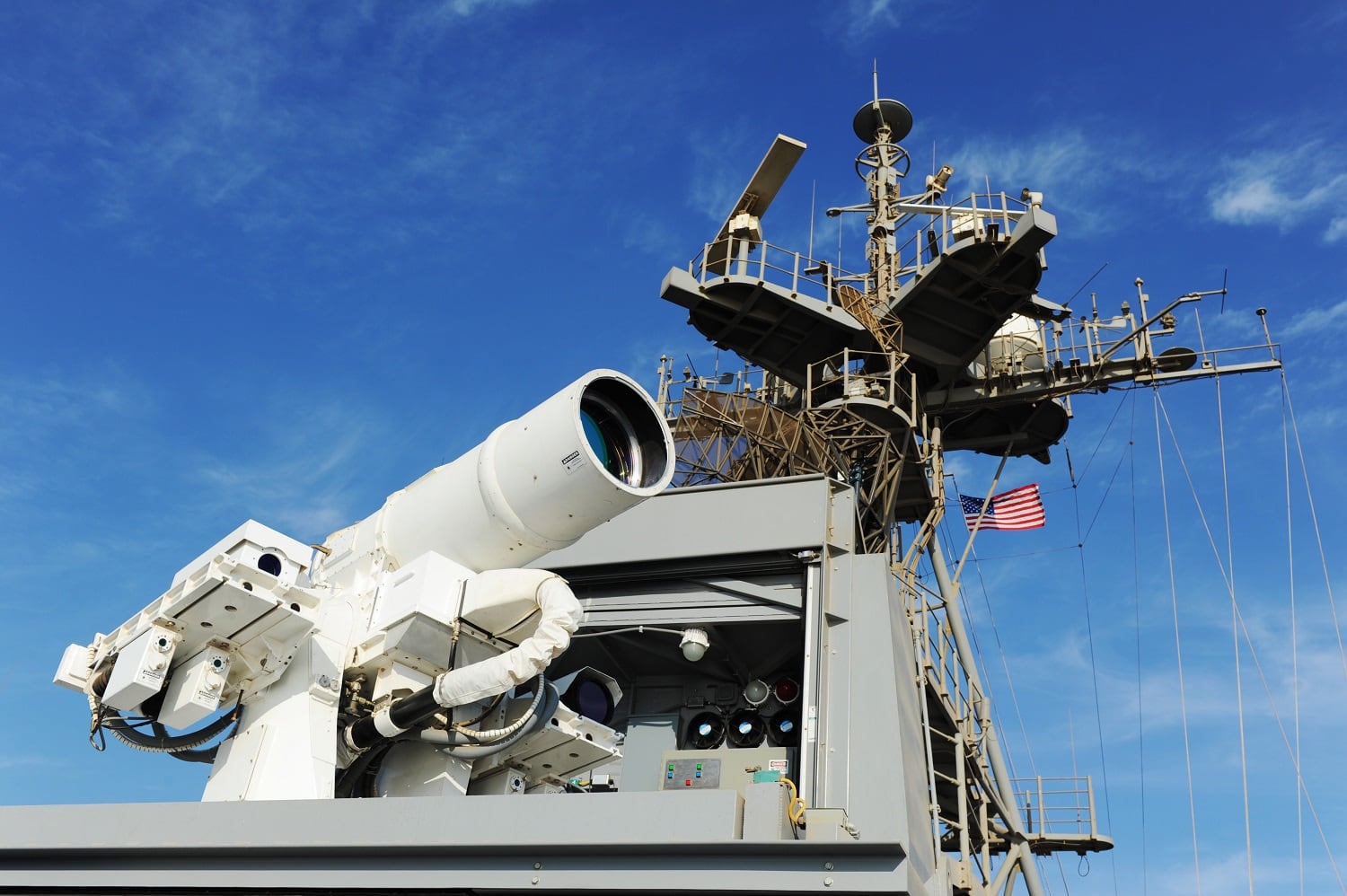WASHINGTON ― The U.S. Navy’s director of surface warfare is ready to bet the farm on using lasers to shoot down missiles.
The outgoing head of the chief of naval operations’ surface warfare directorate, Rear Adm. Ron Boxall, said the Navy is going to get its High Energy Laser and Integrated Optical-dazzler with Surveillance system, or HELIOS, on the Hawaii-based destroyer Preble in 2021, a moment that he compared with Spanish conquistador Hernan Cortez ordering his own ships scuttled to motivate his men.
“The key for us is HELOS: a shipboard laser that will take the place of what we have now,” Boxall said, referring to systems such as the Close-in Weapon System and Rolling Airframe Missile, during a May interview with Defense News.
“When Cortez burned his boats it was a message that they were going to win, and they were only going to win by going forward,” he said. “Similarly, we are making the decision to put the laser on our DDGs. It’s going to start with Preble in 2021, and when we do that, that will now be her close-in weapon that we now continue to upgrade.”
RELATED

HELIOS, a 60-kilowatt laser with room to grow to 150 kilowatts, is being developed by Lockheed Martin, which also produces the Aegis combat system currently on destroyers. The laser is going to be fully integrated into the combat system as well as the power system, Boxall said.
“We’re not only going to [take from] Aegis, we’re going to [talk to] Aegis,” he said. “A lot of people think that lasers are just something that shoots but lasers are also a very good sensor. As you get closer to a radar, your radar gets worse. As you get closer to a laser, it gets better.”
The big hurdle, Boxall said, is getting the laser integrated with Aegis so that it’s feeding high-fidelity sensor data into the combat system. He’s less focused on increasing the power of the laser at the moment, but added “that’s also going very well.”
As for integration, Lockheed Martin representatives said the system is on track for the 2021 date with the Preble and that the system will be just as much a part of the ship as the vertical launch system.
“You’re going to be able to pass tracks back and forth between the Aegis system and the laser subsystem,” said Brandon Shelton, Lockheed Martin’s HELIOS program director. “It’s also going to be structurally integrated into the ship — it’s not going to be bolted on. And it’s integrated into the ship’s power system — we’re not going to be bringing extra energy magazines or batteries onto the ship. It fits within the ship’s power.”
The system went through a design review with the Navy in March, Shelton said, and that by the end of the year Lockheed will start systems integration at their Moorestown, New Jersey, campus. Lockheed expects to complete integration by mid-2020.
With the progress on HELIOS, the Navy is getting closer to fielding a laser that could help it knock down Chinese and Russian anti-ship cruise missiles at very close ranges, said Bryan Clark, a retired submarine officer and analyst with the Center for Strategic and Budgetary Assessments.
“There is a viable path right now, with the DoD’s laser tech maturation program, to get to a 1-megawatt laser that can fit on a ship,” Clark said. “So once you get past 500 kilowatts, you start getting to a laser that can take down incoming cruise missiles — even supersonic ones.”
There are ongoing studies to see just how far the Navy could take laser technology in defeating even hypersonic threats in the future, Clark said, but getting lasers on ships isn’t a matter of if, but rather when.
“The laser being able to shoot down cruise missiles: That will happen,” he said. “There’s not a particular technical challenge with that. It’s about developing a laser with the form factor that will fit on a ship and a ship with the power capacity to power it. That’s a doable proposition.”
RELATED

Bending the cost curve
The requirement for the laser stems from the proliferation of high-tech, anti-ship cruise missiles that travel at ever-increasing speeds with greater degrees of sophistication. Old Aegis doctrine called for ships to shoot two anti-air missiles at an incoming threat, look to see if it the first salvos were effective, then shoot again if need be. Ideally, an incoming missile wouldn’t get within 100 miles of its intended target.
But the U.S. believes China and Russia are developing tactics and systems to force ships to expend all their missiles against an incoming salvo, and they might accomplish this by firing more missiles than the ships can shoot down — a saturation attack designed to leave the ships helpless after a certain number of salvos.
Defending against saturation attacks with other missiles is not only something that can be defeated by firing more missiles than the ships can defend against — it’s also mindlessly expensive.
The goal of lasers is to start to make those kinds of attacks cost more for an adversary to launch than it costs the Navy to defend against. There is also the practical benefit of having an inexhaustible supply of ammunition, so long as the power is running to the weapon.
But there are still issues to work out, Clark said.
“If you have directed energy, it’s ‘shoot until you think you’ve killed the thing you are shooting at and then move onto the next target,’ ” he said. “And that gets back to ‘what’s the requirement for the power.’ Because even with a 1-megawatt laser, you still have [a] finite amount of time you have to engage every target. And your one laser can only do one thing at a time.”
That means that even with lasers on ships, missiles for shooting down missiles will remain necessary for the foreseeable future.
“If you have a salvo coming in, it will hit some number of them, but a lot depends of their geometry, how good a shot you get at them, how the threats are spaced, how far away they are," Clark said. "The laser can get maybe two, three, five or six of them, then they are on you. So you have to have some kinetic weapons, as well, to fill the gap.”
David B. Larter was the naval warfare reporter for Defense News.








